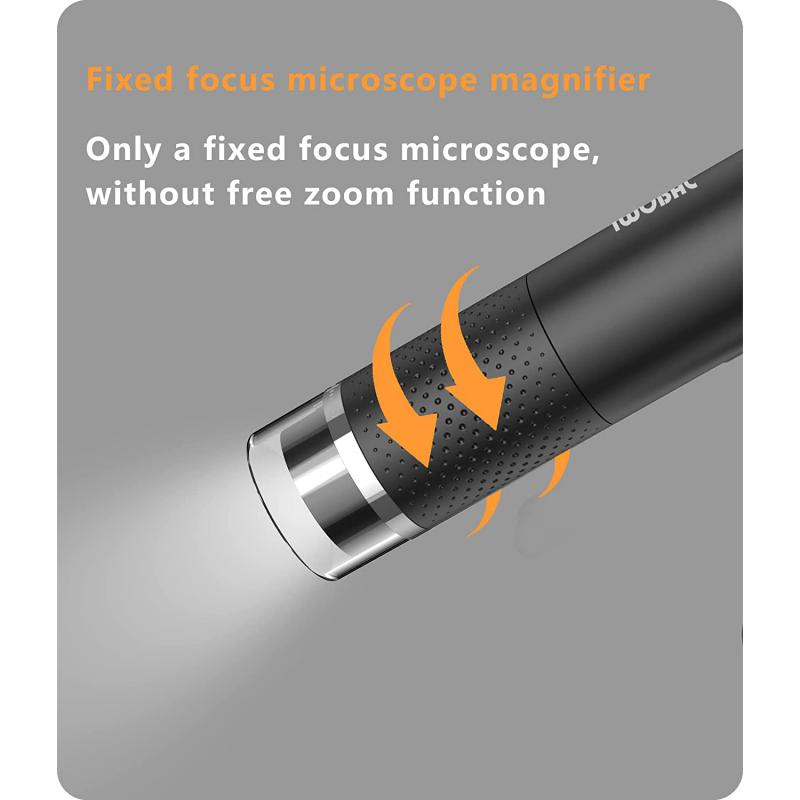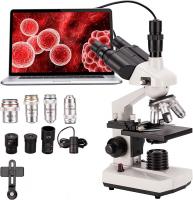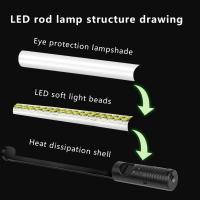What Do Worms Look Like Under A Microscope ?
Under a microscope, worms appear as elongated, cylindrical organisms with a distinct body structure. The exact appearance may vary depending on the type of worm being observed. Generally, worms have a soft, segmented body covered in a thin, transparent cuticle. The body is divided into segments called annuli, which give them a segmented appearance. Some worms may have bristles or setae on their body segments.
The internal structures of worms can also be observed under a microscope. These include the digestive system, reproductive organs, and nervous system. The digestive system typically consists of a mouth, pharynx, esophagus, intestine, and anus. The reproductive organs can vary depending on the species and may include ovaries, testes, or both. The nervous system of worms is relatively simple, consisting of a nerve cord running along the length of the body.
Overall, observing worms under a microscope provides a closer look at their anatomical features and allows for a better understanding of their biology and behavior.
1、 Morphology of Worms under Microscope
The morphology of worms under a microscope reveals fascinating details about their structure and anatomy. When observed under high magnification, worms display a variety of unique features that contribute to their diverse lifestyles and ecological roles.
One of the most striking characteristics of worms is their segmented body, which can be clearly seen under a microscope. Each segment, or metamere, is separated by septa and contains specific organs and structures. The external surface of worms is covered by a thin cuticle, which protects their bodies and aids in movement. The cuticle may appear smooth or have various patterns and ridges, depending on the species.
Worms also possess a well-developed digestive system, which can be observed in detail under a microscope. The mouth, located at the anterior end, leads to a muscular pharynx that helps in the ingestion of food. The digestive tract extends through the body, with specialized regions such as the crop, gizzard, and intestine, each serving different functions in the breakdown and absorption of nutrients.
Under high magnification, the circulatory system of worms becomes visible. Some worms have a closed circulatory system, where blood is contained within vessels, while others have an open circulatory system, where blood flows freely within body cavities. The presence of a pumping organ, such as a heart or aortic arches, can also be observed in certain species.
Furthermore, the reproductive organs of worms can be examined under a microscope. Many worms are hermaphroditic, possessing both male and female reproductive structures. The complexity and arrangement of these organs vary among different species, providing insights into their reproductive strategies.
It is important to note that the morphology of worms under a microscope can vary greatly depending on the species being observed. Recent advancements in microscopy techniques, such as confocal microscopy and electron microscopy, have allowed for even more detailed examination of worm morphology, revealing intricate structures at the cellular and subcellular levels.
In conclusion, the morphology of worms under a microscope offers a glimpse into their intricate anatomy and adaptations. By studying their external features, digestive system, circulatory system, and reproductive organs, scientists can gain a better understanding of the diversity and complexity of these fascinating organisms.

2、 Internal Structures of Worms at Microscopic Level
Under a microscope, worms reveal a fascinating world of intricate internal structures. The exact appearance of worms under a microscope can vary depending on the species being observed. However, there are some common features that can be observed at the microscopic level.
One of the most prominent structures visible in worms is the digestive system. Worms have a tube-like digestive tract that runs from their mouth to their anus. This tract is often lined with specialized cells that aid in the breakdown and absorption of nutrients. Additionally, worms may have structures such as a pharynx, esophagus, crop, gizzard, and intestine, each serving a specific function in the digestion process.
Another important structure that can be observed is the nervous system. Worms have a simple nervous system consisting of a brain and a ventral nerve cord. The brain is located in the anterior part of the worm and is connected to the nerve cord, which runs along the ventral side of the body. This nervous system allows worms to sense and respond to their environment.
Other internal structures that can be observed under a microscope include the reproductive organs, excretory system, and circulatory system. These structures vary in complexity depending on the species of worm being observed.
It is important to note that advancements in microscopy techniques have allowed for more detailed observations of worm anatomy at the microscopic level. For example, the use of fluorescent dyes and confocal microscopy has enabled researchers to study specific cells and tissues in greater detail.
In conclusion, worms under a microscope reveal a complex network of internal structures. From the digestive system to the nervous system, these structures provide insights into the biology and physiology of these fascinating organisms.

3、 Cellular Composition and Organelles in Worms under Microscope
Under a microscope, worms exhibit a fascinating cellular composition and intricate organelles that contribute to their unique biological functions. The cellular structure of worms, such as earthworms or nematodes, consists of various specialized cells that work together to support their survival and reproduction.
When observed under a microscope, the body of a worm appears segmented, with each segment containing specific organs and tissues. The outer layer of the worm's body is covered by a protective cuticle, which helps maintain its shape and provides a barrier against the external environment. Beneath the cuticle, the worm's body is composed of layers of muscle cells that enable movement and locomotion.
Worms possess a digestive system that includes a mouth, pharynx, intestine, and anus. The mouth is often equipped with specialized structures, such as teeth or jaws, to aid in feeding. The digestive system is responsible for breaking down food and absorbing nutrients necessary for the worm's survival.
Additionally, worms have a well-developed nervous system, consisting of a brain and a ventral nerve cord. The brain receives sensory information from the worm's environment, while the ventral nerve cord transmits signals to different parts of the body, coordinating movement and behavior.
Under a microscope, various organelles can be observed within the cells of worms. These include mitochondria, responsible for energy production, and endoplasmic reticulum, involved in protein synthesis and lipid metabolism. The Golgi apparatus, involved in packaging and transporting cellular materials, can also be observed.
It is important to note that the cellular composition and organelles in worms can vary depending on the species and developmental stage. Ongoing research continues to uncover new insights into the microscopic structure and function of worms, enhancing our understanding of these fascinating organisms.

4、 Microscopic Examination of Worms' Nervous System
Microscopic examination of worms' nervous system provides valuable insights into their anatomy and functioning. When observed under a microscope, worms reveal a complex network of neurons and nerve fibers that form their nervous system. The exact appearance of worms under a microscope can vary depending on the species being studied, but there are some general characteristics that can be observed.
One of the most prominent features of worms' nervous system is the presence of a ventral nerve cord, which runs along the length of their body. This nerve cord is composed of a series of ganglia, or clusters of nerve cells, connected by nerve fibers. The ganglia are responsible for processing and transmitting signals throughout the worm's body.
In addition to the ventral nerve cord, worms also possess sensory organs that can be observed under a microscope. These sensory organs, such as the amphids and phasmids, are responsible for detecting environmental cues and transmitting them to the nervous system for processing.
Recent advancements in microscopy techniques have allowed researchers to delve deeper into the intricacies of worms' nervous system. For instance, fluorescent labeling techniques can be used to visualize specific neurons or neural pathways, providing a more detailed understanding of how information is processed and transmitted within the nervous system.
Furthermore, the use of advanced imaging technologies, such as confocal microscopy, enables researchers to create three-dimensional reconstructions of the nervous system, allowing for a comprehensive analysis of its structure and connectivity.
Overall, microscopic examination of worms' nervous system provides a window into their neural architecture and functioning. It helps researchers understand how worms perceive and respond to their environment, and serves as a valuable model for studying fundamental principles of neurobiology.





































